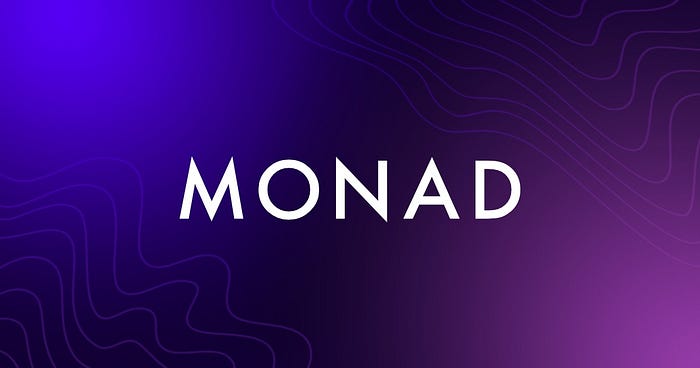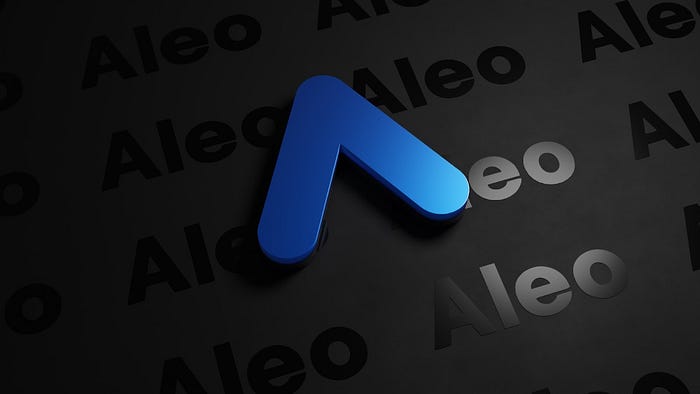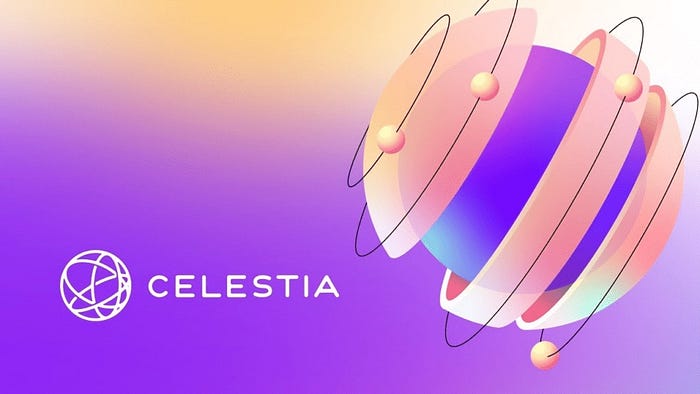This article compares and analyzes the strengths and weaknesses of mainstream Layer1 projects such as Aptos, Sui, Monad, Aleo, and Celestia in terms of scalability, ecosystem development, and team strength. It believes that they will become the protagonists of the next round of Layer 1 project competition, and the future Layer 1 projects will form a more diverse and larger-scale ecosystem.
Author: Beehive Validator / Source: https://medium.com/@beehive.validator/overview-of-the-entire
Translated by: 火火/白话区块链

For cryptocurrency investors, the first-layer conflict is no longer a new concept. However, due to the continuous creation and improvement of Layer 1, investors who do not keep up with the market may find investing in Layer 1 extremely unprofitable and no longer in line with the development trend.
This article will outline the past and upcoming first-layer wars, including analysis, evaluation, and lessons learned from observing these first-layer wars.
I. Review of Layer 1 Project History
1. The first first-layer battle
When I entered the crypto market in 2018, an OG told me, "Buy ETH, the price has been halved from the top; it has bottomed out," which was also my opportunity to enter the market. Previously, projects like Ethereum were not referred to as Layer 1, but rather as smart contract platforms.
During this period, the birth of many smart contract platforms such as Cardano and NEO (referred to as the Chinese Ethereum, Tron, EOS, and Monero) was to solve this problem. Ethereum's scalability solution (transaction speed + transaction fees), also known as ETH Killers. However, most ETH killers no longer exist.
2. The intense battle of 2020-2024
The next first-layer war occurred during the recent cryptocurrency bull market, and we are still living in this cycle. The main task of this phase is to solve Ethereum's scalability issue. Nevertheless, this conflict seems to be more diverse than the previous cycle's war. But the result is the same!
This cycle focuses on fundamental blockchains with the following characteristics:
1) Blockchain Internet: Cosmic, Polkadot, and Avalanche.
2) Overall blockchain: Solana, Near Protocol, Fantom, Celo…
In this article, we will not delve into the competition process of the first layer, but we want to make it clear that the trend of developing the first layer is not only a solid concept that has remained attractive since its inception, but also a relatively new concept. However, the next generation of projects demonstrates a more grand and robust nature than the previous generations.
Therefore, looking back and looking ahead, there is a high probability that the next round of first-layer wars between well-known projects such as Sui Blockchain, Aptos, Aleo, Celestia, and Monad will occur in the next bull market cycle.
II. Overview of the next cycle's first-layer platforms
For new Layer 1 projects, we will review the following highlights:
1) Scalability solutions
2) Ecosystem
3) Core team and investors
1. Aptos
Aptos is one of the new Layer 1 mainnets and has made significant contributions to the trend of tracing/airdrops. Initially, users creating NFT testnets on the Aptos network received an average airdrop of $3000 per account.

Scalability solutions on Aptos
Aptos uses the Block-STM algorithm and BFT consensus mechanism to execute transactions on the network, solving Ethereum's scalability issues and avoiding the experience of multiple Solana crashes. The parallel processing of the Aptos network can execute a large number of transactions simultaneously, achieving a network speed of 160,000 TPS.
Aptos uses Rust, which is currently one of the most famous languages in the cryptocurrency market, in addition to Move, built on Facebook's Diem.
Aptos ecosystem
After introducing the APT Token and conducting large-scale airdrops to the community, the number of projects on the Aptos network has surged. This indicates that Aptos has had a good start. However, most early Apos projects were of poor quality, with a considerable portion involving user fund scams. Nevertheless, due to the following positive developments, the future of the Aptos ecosystem still holds considerable promise:
1) Strong support from BN and BNB Chain: Aptos is the first blockchain to land PancakeSwap, indicating that Binance's support for Aptos is not just strategic investment.
2) Some highlight projects, including Thala Labs, Pontem, Aries Market, Totuga Finance, and Martian Wallet, have successfully raised funds. This proves that venture capital continues to favor key components of the Aptos ecosystem.
3) Additionally, the use of Rust and many other famous programming languages can help strengthen the Aptos ecosystem.
Although the number of high-quality projects on Aptos is relatively small, in the long run, Aptos has had a relatively positive start and has left a deeper impression than its counterpart Sui, which is a positive signal for the ecosystem.
Team and investors
The talent of the Aptos development team is undeniable; it's just that this team worked at Facebook and built DIEM until the project was close to completion and ready to launch without government intervention.
Even after the mainnet went live, the platform raised hundreds of millions of dollars, with a valuation of $4 billion. In addition, Binance Incubator also invested in Aptos' strategic round.
Rating
We will evaluate the platform based on two main technical and ecosystem-related factors:
1) Aptos has technically addressed Ethereum's scalability issue in the execution phase. However, there are also risks in the parallel execution of multiple transactions, and the real problems cannot be identified before the project launches. Aptos' horizontal scaling choice seems quite appropriate at this time.
2) From an ecosystem perspective, Aptos' new ecosystem is still in its early stages, and there is not enough evidence for a detailed evaluation.
2. Sui
Unlike Aptos, Sui's mainnet activity did not meet expectations, as there were no traces or airdrops, and testnet players did not like it. Instead, there was only the opportunity to purchase SUI at a price of $0.03, equivalent to a valuation of $300 million. However, this is not the reason why Aptos on the other side of the front line outperforms Sui.

Scalability solutions on Sui
Sui is a monolithic blockchain similar to Solana, Fantom, or Near Protocol. However, Sui and Aptos are very similar to some extent. Unlike Solana, they choose horizontal growth instead of vertical growth. If Aptos decides to use parallel execution to process multiple transactions simultaneously, Sui will choose a different development direction. This means that Sui has taken a different approach to solving the trade-off between blockchain scalability, security, and decentralization, allowing Sui's transaction speed per second to match or even exceed Aptos without using Solana's standard nodes. Therefore, Sui has made a breakthrough in addressing the issue of blockchain scalability, security, and decentralization.
Narwhal-Tusk Consensus Algorithm is a key component; this consensus mechanism solves the main problem of the Memepool, which is validators categorizing transactions into the blockchain and is considered the bottleneck of every blockchain. This will solve the scalability problem of the blockchain.
Therefore, Sui's TPS can match or even exceed Aptos without the need for Solana standard nodes. Therefore, Sui partially addresses the trade-off between blockchain scalability, security, and decentralization.
Sui's Ecosystem
Sui's ecosystem is still in the early stages of infrastructure development and therefore receives little attention. Typically, it takes a year for Layer 1 platforms to establish infrastructure components such as wallets, bridges, oracles, and APIs before the ecosystem can enter a sustainable operational and growth phase.
Team and Investors
Similar to the Aptos development team, most members of the Mysten Lab development team responsible for building the Sui blockchain come from the DIEM project. However, there are significantly more DIEM developers in the Sui Blockchain development team than in the Aptos team, and they are more consistent.
Rating
The future of the Sui blockchain may be difficult to predict at the moment, but compared to its competitor Aptos, the Sui development team places more emphasis on solving transaction issues. In terms of scalability, Sui's solution is more secure and practical. However, the development team or technology is still in the early stages.
The most important factor we need to pay attention to is the development strategy of Layer 1 itself. From an investor's perspective, Sui and Aptos are the two blockchain platforms that have raised the most funds and have the highest valuations.
3. Monad - EVM Blockchain built by the Jump Trading team
Monad is a blockchain platform that has recently attracted attention in the crypto market, not because of its technology or development team, but because of airdrops or traces. The project is preparing to launch a testnet version in the near future. Therefore, any long-term investors should pay attention to Monad.

Scalability solutions on Monad
Monad, unlike Near Protocol, Sui Blockchain, and Aptos, is an EVM blockchain with a proof-of-stake consensus mechanism and scalability of up to 10,000 transactions per second (TPS). So, what contributes to Monad's high speed?
Like Sui Blockchain and Aptos, Monad believes that the execution phase is the scalability barrier for any platform blockchain. Similar to Aptos, Monad found that traditional blockchains use sequential execution to organize transactions. To address this issue, Monad adopts parallel execution.
Monad's Ecosystem
Monad is still in the development process and is preparing to launch a testnet version in the near future, so the Monad ecosystem currently has no participants.
Team and Investors
The Monad development team has been collaborating with Jump Trading for over 7 years. In addition, Monad has successfully raised a total of $19 million from Dragonfly Capital, Lemniscap, Shima Capital, Palceholder, and other investment funds.
Rating
It is currently difficult to evaluate Monad, but based on the limited information available, preliminary conclusions can be drawn.
1) Furthermore, raising funds from numerous large investment funds validates the potential of the development team.
2) Parallel execution also has risks.
4. Aleo
Aleo is a blockchain platform aimed at providing decentralized and fully private applications for all Web3 users through the development of core zero-knowledge technology.

Scalability solutions on Aleo
According to Aleo's documentation, the platform does not emphasize scalability, but Aleo aims to provide privacy for all platform users through Zk technology features.
Aleo's Ecosystem
The new Aleo ecosystem is still in the early stages of development, with initial foundational components including Leo Wallet, VolcaniX, Nucleo, Demox Labs… We still need a lot of time to follow up on the Aleo ecosystem. Currently, Aleo is still in the testnet, and the official mainnet roadmap has not been announced.
Team and Investors
Aleo has successfully raised a total of $298 million from A16Z, Coinbase Ventures, Placeholder, and Polychain Capital… However, in fact, the Aleo development team is not particularly impressive. Clearly, fund investors have information that we have not yet discovered.
In early February 2022, Zk technology was not as interesting, attention-grabbing, or FOMO-inducing as it is now, especially after CZ's tweet about Zk technology.
Rating
We currently lack sufficient information to evaluate Aleo and need additional observation time. Governments, especially the US government, may actively hinder the areas of interest that Aleo is focusing on. When such significant obstacles arise, will Aleo adjust its goals?
5. Celestia
According to the project, Celestia is the first comprehensive modular blockchain in the crypto market, so although it has not raised as much funding as Aptos or Sui, Celestia has still attracted great interest from the crypto community.

Scalability solutions on Celestia
Celestia intends to separate the execution and consensus processes from data storage. Consensus, execution, and data storage occur on a single layer, similar to other overall blockchains. However, in Celestia, these processes will be isolated and managed in different layers. So, how does Celestia address the scalability issue?
Roll-ups: Off-chain transaction processing With the aforementioned data storage structure, Celestia has the potential to be an ideal environment for developing Roll-ups: OP rollup requires data to prove the invalidity of failed transactions, while zk-rollup requires complete data to reaggregate the state of the chain.
Celestia's future model is similar to the model between Ethereum and Layer 2 platforms using Rollup technology. When the Ethereum 2.0 roadmap is implemented, Ethereum will also become a fully modular blockchain. Modular blockchains are clearly the evolutionary trend of the future cryptocurrency market.
Celestia's Ecosystem
Celestia is currently in the development process, so the ecosystem has not yet formed.
Team and Investors
There are several noteworthy aspects of the Celestia development team. The co-founders of the project are also senior developers at Cosmos, and other team members also have strong backgrounds.
Rating
Overall, Celestia's model is well-founded, but becoming a modular blockchain will take a lot of time. Compared to Aptos and Sui, Celestia's growth rate is significantly slower because the technology they are trying to develop is very complex.
III. Conclusion
The above are Layer 1 projects, and we believe that these projects will make breakthroughs in the next cryptocurrency market cycle.
免责声明:本文章仅代表作者个人观点,不代表本平台的立场和观点。本文章仅供信息分享,不构成对任何人的任何投资建议。用户与作者之间的任何争议,与本平台无关。如网页中刊载的文章或图片涉及侵权,请提供相关的权利证明和身份证明发送邮件到support@aicoin.com,本平台相关工作人员将会进行核查。




